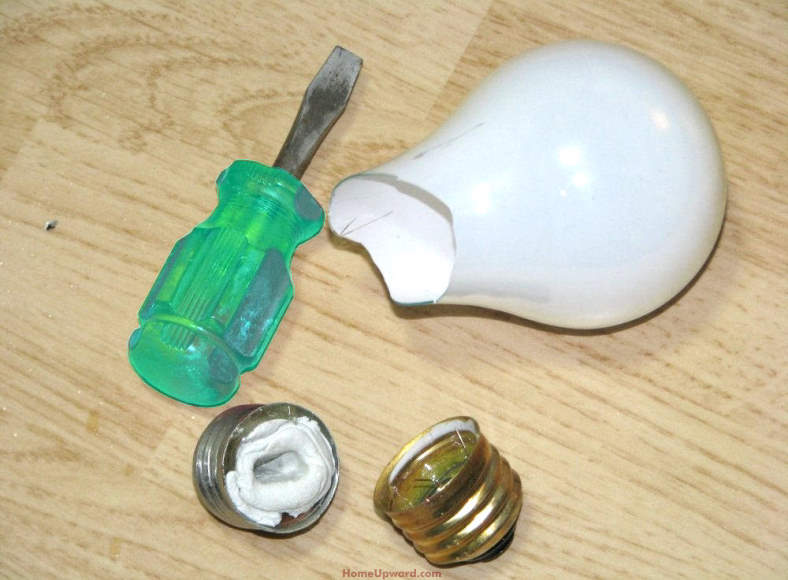I recall the first time I encountered a faulty light bulb socket. It was a cold winter evening, and darkness engulfed the living room as I fumbled with the bulb’s base. To my dismay, the bulb refused to light up, leaving me in a dimly lit room. Upon closer examination, I discovered the bulb’s socket had succumbed to the corrosive effects of time, its metal contacts covered in a layer of rust and tarnishing.

Image: homeminimalisite.com
Understanding Corrosion: The Unseen Enemy
Corrosion is an insidious process that relentlessly attacks metal surfaces, leading to the formation of rust and tarnishing. This process can be accelerated by moisture, humidity, and exposure to harsh elements or chemicals. Light bulb sockets, often made from brass or aluminum, are particularly susceptible to corrosion due to their constant exposure to moisture and temperature fluctuations.
Restoring the Shine: A Step-by-Step Revival
Fortunately, with a bit of patience and effort, it’s possible to revive corroded light bulb sockets and restore their former glory. Here’s a comprehensive guide to help you clean and eliminate rust and tarnishing:
- Unplug and Disassemble: For safety reasons, always ensure the light bulb is turned off and the power source is disconnected before attempting any cleaning. Remove the light bulb and any accessible socket covers or outer components.
- Choose Your Cleaning Solution: White vinegar is a natural and effective cleaning agent for removing rust and tarnishing. Simply soak the corroded parts in a vinegar bath for 30 minutes to loosen the deposits.
- Scrubbing Away the Rust: Using a soft-bristled brush, gently scrub the corroded areas of the socket. Avoid using abrasive brushes or steel wool, as these can damage the metal surface.
- Abrasive Cleaning Paste (Optional): For stubborn corrosion, an abrasive cleaning paste can be applied to the affected areas. Use a cloth or sponge to gently rub the paste onto the rust and remove it with a damp cloth.
- Neutralize and Clean: After removing the rust and tarnishing, neutralize the socket by wiping it down with a solution of baking soda and water. This will remove any remaining traces of vinegar and leave the metal surface clean.
- Dry Thoroughly: Use a clean cloth or paper towels to thoroughly dry the socket and any cleaned components. Ensure all moisture is removed before reassembling the socket to prevent further corrosion.
Tips from the Experts: Enhancing Your Cleaning Arsenal
- WD-40: As a lubricant and rust remover, WD-40 can penetrate tough corrosion and make the cleaning process easier.
- Sandpaper: For deeply corroded surfaces, a fine-grit sandpaper can be used to remove the damaged layer of metal.
- Electrical Contact Cleaner: Specially formulated electrical contact cleaners can be used to remove oxidation and improve electrical conductivity.

Image: www.pinterest.com
Common FAQs: Addressing Reader Concerns
Q: Can I use a commercial rust remover?
A: While commercial rust removers can be effective, it’s important to choose one specifically designed for use on metal surfaces and follow the instructions carefully.
Q: How often should I clean my light bulb sockets?
A: Regular cleaning is essential for preventing corrosion. It’s recommended to clean light bulb sockets at least once a year, or more often if exposed to moisture or harsh conditions.
Q: What if the corrosion is too severe?
A: In cases where the corrosion is extensive or deeply embedded, it may be necessary to replace the socket for safety reasons.
How To Clean Corroded Light Bulb Sockets
Conclusion: Restoring Light, Preventing Shadows
By following the steps outlined in this guide, you can effectively clean and restore corroded light bulb sockets, ensuring optimal performance and preventing electrical hazards. Whether you’re facing a flickering light bulb or simply want to maintain the integrity of your lighting fixtures, taking proactive measures to eliminate rust and tarnishing will prolong the lifespan of your sockets and illuminate your surroundings with brilliant clarity.
Call to Action: If you’ve encountered corroded light bulb sockets or have any further questions about this topic, don’t hesitate to reach out and share your experiences or seek assistance.